|
In the intricate dance of life, every cell is but a humble player on a grand stage, intricately intertwined with its surroundings. From the air we breathe to the food we consume, the environment shapes the very fabric of our existence. Indeed, the health of an individual is not solely determined by the internal workings of their cells, but rather by the intricate interplay between these cellular entities and the immediate micro-environment that surrounds them up to the macroscopic environmental state of the planet at large. Welcome to the realm of environmental medicine (EM), where the understanding and preservation of our planet's delicate ecosystems are paramount to fostering health and vitality in both individuals and communities alike. Join us as we delve into the profound impact of environmental factors on human health and explore the transformative power of embracing a holistic approach to wellness. In modern healthcare, a holistic approach to wellness is desperately needed: one that integrates such principles as nutrition, physical activity, sleep hygiene, and environmental awareness. At the forefront of this movement is the global community of practitioners advocating for integrative medicine, with a steadfast commitment to patient-centred care and systems biology approach that abrogates a reductionist “one symptom, one drug” undertaking. Environmental medicine combines conventional practice with natural medicine and organic theory and practice. I undertook the Fellowship because, at its heart, it embraces the following principles: Integrity and Independence: The Cornerstones of Integrative Medicine At the heart of integrative medicine lie the values of integrity and independence. These principles are upheld by ensuring that education and advocacy efforts are firmly grounded in evidence-based research and delivered with the utmost respect for individual needs and preferences. The commitment to unbiased, independent education ensures that patients receive the most accurate and reliable information to support their health journey. In light of the past several years, can you appreciate the deep profundity of these words and this commitment? Innovation and Collaboration: Embracing New Frontiers in Healthcare In the ever-evolving landscape of healthcare, innovation is key to driving progress and improving patient outcomes. Embracing new evidence-based ideas, approaches, and thinking, constantly seeking to push the boundaries of conventional medicine are tenets. Collaboration with leading clinicians, academics, and industry experts allows the harnessing of collective expertise to deliver cutting-edge education, information, and advocacy to the community. Fellowship: A Pathway to Mastery in Integrative Medicine The Fellowship pathway offers a formal post-graduate program designed to provide practitioners with a deep understanding of the theoretical framework and practical application of integrative medicine. Through rigorous training and mentorship, fellows gain the skills and knowledge necessary to navigate the complexities of modern healthcare and deliver comprehensive, patient-centered care. There are certain pillars of Environmental Medicine that should define (holistic) healthcare. For example: EM underscores the pivotal role of diet in integrative medicine. It advocates for a nutrient-dense diet tailored to individual needs, highlighting the significance of vitamins, minerals, and other essential nutrients in the right combinations to promote optimal health. EM promotes the integration of lifestyle modifications and preventive strategies and addressing risk factors through comprehensive interventions like, exercise, stress management, and targeted supplementation. EM is an advocate of natural health, emphasises patient education and empowerment in integrative medicine. Through this platform, EM educates individuals on the importance of informed decision-making and self-care practices in achieving optimal health outcomes. EM advances longevity and performance optimisation, emphasises a proactive approach to health through integrative medicine, optimising metabolic health, hormone balance, and resilience to promote vitality. Environmental factors exert a profound influence on health, encompassing everything from cellular burdens to personal stressors to global issues such as air pollution and climate change. Addressing these factors is crucial for safeguarding human health and preserving the integrity of our planet. By promoting awareness and advocating for sustainable practices as defined by environmental medicine, we can create a healthier, more resilient world for generations to come. Be well. Ever since medical information, and in particular alternate health information overtook porn as the reason most people surfed the net, search terms like “alternative treatment for (a particular disease)” have become the most popular and led to the meteoric rise of the world’s most popular doctor - Dr Google. , To undertake an internet search today for topics related to “alternative” medicine and natural health is a completely different experience to the one you would’ve had a decade ago: in fact, just three years ago. How do I know this? I know this because search results that I accessed in times past are no longer available or show up. I know this because today, it takes me two to ten times longer to research and write a technical article if I base my efforts on mainstream internet resources. I know this because entering highly specific combinations of medical search terms can often initially produce several pages of government and industry funded responses. I know this because the results I receive are directly contrary to clinical experience and 33 years of learnings I know to be true. I know this because the first page; five pages; ten pages of results all push the exact same narrative, as if in the known history of the world, there was one and only one, opinion on the subject. I know this because of the kinds of conversations I have with you in the practice and the kinds of questions you ask. This did not occur in times past, and are just some of the more obvious reasons why the health search experience is different. My next question then is: do you know this? I say this, because I expect a lot of you. I also expect a lot for you. I have a mentor who always begins a course with the following phrase by Eckhart Tolle: “The teacher and the taught, together create the learning.” Over the years, I have learnt as much from you as you have possibly learnt from me. It is my expectation, or at least my hope, that everyone who comes to see me takes ownership of their health. Without taking on this responsibility, I can assure you, people do not improve as quickly, or at all. It follows then, that you need to be informed and informed correctly, wisely. Although censorship of medical information has been on a slow but deliberate drip for many years, this all began to change with speed in the several months leading up to the onset of the pandemic when Google began to change their search algorithms - the formulas that determine where certain information ranks in the results - to target “medical and health information that could impact your physical wellbeing.” Swiftly, medical information other than the mainstream narrative disappeared or was relegated to pages where only the most resolute and tenacious dared to tread. Sometimes, these were sites that had ranked number one for an age. Now, I have never accepted the theory that I should subscribe to an opinion because it is the most popular. In fact, it can be a good reason NOT to subscribe to it. However, in the space of a few short years, we have seen over three decades of work and research done by some very conscientious and credentialed health professionals scrubbed away. I am one of these obsidious people who will ignore hearsay and chase information back to its source. I have the wherewithal and training to know where to search and how to search to uncover original and untainted information. I am lucky that I have the time. But, I can fully appreciate that not everyone is so inclined. Unfortunately, this is what those who determine what information you have access to, are counting on. It is one of the main ways we are swindled into accepting the prevailing account as truth. It is not the point of this article to outline how and why this information has been denied us, for the truth of it agitates my very cells and to follow its line of enquiry would have your friends asking where you’ve been for the last three months. Google it. Oh, wait, …. If i was to perform a Google search for something like “alternatives to antibiotics” I would get a very different list of results compared to substituting with another search platform. There is an argument pushed by mainstream bodies that, if complementary options were so beneficial then they would be consolidated within the healthcare structure. This argument supposes that pharmacologically funded research has no self-interest and that administrative divisions and for-profit medical agencies are unimpaired. It assumes those in charge are ethical caretakers and that professionals and modalities left on the periphery are there because they have less quality and worth. Unfortunately, the same machinations that eschew whatever doesn’t bow to entitlement and profit exist in the health arena, too. It’s taken me a while to get to, but the impetus for this article is that recently, YouTube redefined its guidelines for what they call “medical misinformation.” Any information that contradicts the WHO narrative (who YouTube states as the world authority on health) will be removed. Even if you have 30 years of content on there, you’ll go. Something as simple as the use of Vitamin D to support the immune system is contra to their beliefs and constitutes removal. This is an authority that was at times, an embarrassment during the pandemic and who’s advice was well short of the mark given current perspectives. Ultimately, there are a few points to make. Firstly, when I set out to create Paragon Health I aimed for it to a comprehensive health resource that aligned with the values of authenticity and excellence. I have tried to be an advocate for your health and so it would be remiss of me not to highlight the immediate and ongoing threat to your wellness, lifestyle and freedom. This last point, freedom, may seem unrelated at first glance but it is inherent to your wellbeing. Your very cells work with this principle and as without, so within. Nextly, realise that the health information you are receiving via google is a self-serving, limited and tainted resource. Consider using a different search engine for your information. The world is becoming increasing complex and the time and know-how it takes to research balanced health information is increasing with it. If you have concerns, reach out to Paragon Health. It is worth starting a discussion and I am happy to facilitate. Lastly, the depth and complexity of this situation is not understood by most. There needs to be a platform for free exchange, debate of ideas and communication in health, let alone all corners: it is at the very fabric of a balanced society and culture. Unless we act differently, it will continue to happen. Freedom is something that dies unless it is used. There is an attempt to ban your rights to use natural healing principles and to deny you the freedom to make informed choices. Consider these points next time you make your search. Be well. If you have any health related concerns that you struggle to find a balanced view on, reach out to Paragon Health via the contact page. If they are relevant to a public discussion, they may serve as topics for future posts? A couple of days ago I attended a World Peace, Human Rights and Freedom rally in downtown Brisbane. The start was substantially late, so I had plenty of time to observe and ponder. Today, we are divided into seemingly inconsolable ideological contingents, estranged by different narratives, both carrying their own truth, data and stories. There is significant disagreement on the course of action and even what those actions represent. In this antagonistic soup, both divisions blame the other for the fall into unethical and immoral behaviour and decisions, having being tripped up by odious and corrupt influencers and organisations. It seems that the antagonism inevitably ends with a familiar and consistent collapse in dialogue. We are becoming an increasingly contrary society. I experience it on my morning bike rides and I see it on social media. It is blatantly obvious as it currently plays out on our global health stage. I noticed it at the rally. On an individual level, if you become polarised within yourself, it can be hard to make a decision. You can become stuck in patterns. These patterns may become lifelong: a lifestyle. Expanded to societal scales, a population that can’t commune with itself, has no choice but to tumble with the momentum. With this unwanted momentum, it’s hard to see the forrest for the trees: to have common objectives, pathways, aspirations and dreams. It’s classic control theory to divide and conquer. Keep the masses confused so that no unifying counterforce can be assembled. Small problems eventually, seemingly, become too big to fathom and nothing reaches resolution. In the end, we are faced with confusion, inertia, and impotence in the manner of our current challenges. The problem with arguments, is that the dispute distracts focus from the real source of the issue: symptoms and not causes. If you had a headache, contention about whether the best choice is to take an aspirin or have a sleep takes away from the real issue — the cause. Ok. Maybe that’s fine if your headache is intractable? But is that what we are talking about here? Are our current health issues untreatable? Do we have NO other options? Almost certainly, this virus will be around forever, in one form or another. However, if viral history is any sort of teacher, then we will understand that humans didn’t survive and thrive this long without developing an amazing, adaptable immune system and that viruses will generally mutate to ensure their survival, which ultimately means the survival of their host. In the meantime, don’t let the symptomatic treatment diminish the desire to tackle the real issues, otherwise we will still be here in the years to come. If we limit the discourse to two extremes of action — either / or — then we run the risk of wholly implacable solutions. As a populous, we will be faced with two completely objectionable options. Because each option is objectionable, each supporter base will objectionable. This will then further bury the root issues and causes. How this issue has been portrayed in the media and in politics agitates our health concerns. It has split the population and diverts notice from the genuine platform of cause. This diversion and oppositional stance draws our attention and comprehension from the intimate workings of the human body. This is where the real discourse should exist. It also shows me how to find my place between poles. The body does not work according to single, narrow interventions. Science reduces our view to that which is measurable, necessitating elimination of all other variables, so that a particular unit / drug / vaccine can be studied. However, the body doesn’t work that way. The body is a delicate web of interconnected systems and there are always, always checks and balances to be made when the status quo is changed. This necessitates an integrated and systematic evaluation and intervention process. As a polarised society, like most arguments, we are participating in the wrong debate here. The distractions divert us from need-to-know facts and alternative options. Relativism, roughly put, is the view that truth and falsity, right and wrong, standards of reasoning, and procedures of justification are products of differing conventions and frameworks of assessment and that their authority is confined to the context giving rise to them (https://plato.stanford.edu/entries/relativism/). Simply put, relativistic thinking is the belief that reality is relative, depending on the adopted perspective. I find this to be true today. Peoples opinions are defined by their personal experience. One’s view of our current plight will most likely be different if they have lost a business or can’t pay a mortgage compared to someone who doesn’t feel the need to leave home much or who may be financially stable. It will be different if they’ve lost a loved one to an illness or virus compared to someone who has seen their child suffer a vaccine injury. Until recently, some from the bush who have been relatively ambivalent and unaffected by lockdowns have changed their views once restrictions hit their area. Relativistic thinking contributes its part to polarisation in today’s society. The problem is, we are progressively encouraged to participate in divisive narratives. As a result, we become fodder for exploitation and it dams the flow for any democratic impetus for us as a whole, to launch coherent and necessary change. There are great forces of power in today’s society, both seen and unseen, that guide our narrative. How can we be organised and relevant enough to stand for ourselves when needed if we are combative over ‘symptomatic’ and misleading issues? A people in conflict with itself cannot move ahead. It is entirely plausible that economic and political extremism is THE most important hurdle to community and planetary health today. There is no easy solution here, but we must begin somewhere and somehow. This view to segregation has become engrained. It is getting worse and it has seeped into the deep spaces. To heal, we must reach the deep places. The best advice I have heard to undo the mental inclination to polarise is to share and listen to our stories that deconstruct the antagonism. This is in part, why the Paragon Health Wellness Wall facebook page was started. We absolutely must make headroom, legroom and elbow room for relativistic thinking and intricacy and entanglements. They are life. Room must exist for non-polarising alternatives. Can we notice the deep motivations within ourselves that polarise? Be well. For quite a while now, I have been suggesting that people get more fibre in their diet. So, how can we do that in one hit in our busy climate and adhere to the principles of a modified mediterranean way of eating at the same time? Current dietary recommendations suggest that females get around 25-28 grams of fibre a day and males around 35 grams. There is also some suggestion that in millennia gone by, we ate closer to 100 grams per day. This amount may not be as appropriate today because our gut microbiome has changed, but I would suggest that the recommended amounts are the minimum that we need for optimal health. So, in the spirit of deliciousness, here’s what I’d recommend for a high fibre, dairy-free, gluten-free, low to moderate carb option: porridge. In winter, eat this hot and in summer, it’ll keep in the fridge for a day or two. The recipe: 2 tablespoons flax seeds (ground up — buy them like this or better, use a coffee grinder to pulverise whole seeds. This is essential because the seed coating is resistant to human digestion). 2 tablespoons chia seeds 2 teaspoons psyllium fibre 2 tablespoons lupin flakes (https://thelupinco.com.au) 1 scoop pea protein powder (Coles homebrand is fine — get from health food section) 2 teaspoons olive oil 1 teaspoon organic turmeric powder (Coles homebrand - health food section) 3-4 grinds of pepper Spices to taste — cinnamon / cardamom / nutmeg / ground cloves …. Honey or Stevia (proper organic stevia from a health food store only) to taste Add some blueberries / raspberries / or pomegranate seeds — maximum of half a cup 1 packet of konjac rice — get from Coles. If you omit this, add an extra tablespoon of chia seeds and lupin flakes to make up the fibre content. You could added some other seeds like pepitas or sunflower seeds which are high in fibre, Just chew them well so they break down. Use some non-dairy milk and water to mix to your desired consistency. Instead of spices, half the time I grind up a mixture of dried herbs in the coffee grinder that I get in bulk from the health food store. The herbs I choose are for liver health (plus other things) and include: 1 tablespoon each of nettle / lemon balm / lemon myrtle / thyme / lavender. This may make one or two servings depending on your want?! You’ll need to drink extra water during the day so it doesn’t gum you up. See how you go?! Be well. Last week, the rollout of the SARS CoVid-2 vaccines began in Australia. Australia’s Prime Minister was amongst the first 20 to have the vaccine, calling it ‘a curtain raiser’ of what’s to come. Have you read the Vaccine program and bought your tickets yet? There are many questions yet to be answered, and not just about the vaccine itself. The arguments for and against vaccination in the generalist sense are but one part in this play of many acts. Having paid our money, we should be wary of leaving after the first scene being told we have appreciated the whole drama. If this play had been written 70 years ago, it may have been purely for the refreshment of its audience. Today, so many writers have had their contribution: medical, scientific, political, economic, government, and private enterprise and billionaires. So much so, that many have written themselves in as the main actors. We live in times where we have been asked to accept the narrative, no questions asked. But the narrative is so complicated, nuanced and shrouded behind curtains of complicated, and often times, false and misleading data. Unless we are prepared to go to source information, to use scientific discernment of intricate and available research, follow the money trail and uncover the conflicts of interests and unethical and amoral actions of some of the players (which are a matter of public record), most of us will be content with the narrative in our play programs. We have chosen to read this program because it doesn’t contain any questions and is only a few paragraphs of synopsis. There is a play next door that has a program with many questions, and has many thousands of pages of information about the performance and will take hundreds of hours to read. This play has very few patrons. Who will rise above human nature and who will invest the time and energy it takes to see it? The first play is relying on that to succeed. This is a difficult piece to write when trying to focus solely on health aspects, for to understand why we must be asking questions it is necessary to appreciate the political and commercial aspects woven with the hegemonising, racketeering and whip handed approaches to this situation over a period of decades. To accept the current narrative is to consign, not just the autonomy over our own health, but our general freedoms to the shrinking pile of liberties. This is not who we are in this country. The curtain must be drawn back and the wider stage appreciated here if we are to appreciate why this vaccine is not all about our health. It is not in the scope of this current article to elucidate further, but I would encourage you to spend 2 1/2 hours watching the following video: Data Disaster: A Call for an Investigation Into the CDC’s Conduct During COVID-19 What kind of questions are pertinent to ask? To set the stage, they are not based around the historical story of ’to vaccinate or not to vaccinate’. They are based around the story of this particular vaccination. What is it? Is it safe? Has it undergone the necessary scientific rigour during testing? Is is designed to stop SARS CoVid 2 (CoVid19)? Is the Corona Virus data reliable? Is there a need to take it? How much of a threat is this particular virus? Are there any other alternatives? What does it mean for you if elderly and not in your 30’s? What does it mean for your newborn? For example, the editorial in the British Medical Journal October 2020 was titled: Will covid-19 vaccines save lives? Current trials aren’t designed to tell us. In the article, it was said: The world has bet the farm on vaccines as the solution to the pandemic, but the trials are not focused on answering the questions many might assume they are. But what will it mean exactly when a vaccine is declared “effective”? To the public this seems fairly obvious. “The primary goal of a covid-19 vaccine is to keep people from getting very sick and dying,” a National Public Radio broadcast said bluntly. And, ... Peter Hotez, dean of the National School of Tropical Medicine at Baylor College of Medicine in Houston, said, “Ideally, you want an antiviral vaccine to do two things . . . first, reduce the likelihood you will get severely ill and go to the hospital, and two, prevent infection and therefore interrupt disease transmission.” Then, ... Yet the current phase III trials are not actually set up to prove either. None of the trials currently under way are designed to detect a reduction in any serious outcome such as hospital admissions, use of intensive care, or deaths. Nor are the vaccines being studied to determine whether they can interrupt transmission of the virus. People have the right to form their own opinion about vaccines, both for and against. This is a premise from the medical fraternity itself who base their tenets on the work on Beauchamp and Childress who created the foundation of modern day bioethics. One of its four principles includes autonomy and enunciates: Autonomy requires the ability to decide for the self, free from control of the others, and with sufficient level of understanding so as to arrive at a meaningful choice. A person should have the capacity to decide upon a course of action, and to put that plan into action. How then to reconcile the needs of the few with the many? In the case of SARS CoVid 2, which groups constitute the few, and which, the many? In the USA, one of the apparently hardest hit countries, the recovery rate (as of February 16, 2021) in the 0-64 age categories is 99.623%. In light of this does the virus necessitate mandatory or wide coverage vaccination? Another of the four principles of bioethics details the notion of informed consent. If you are to undertake a procedure, you must do so in full knowledge of its possibilities and probabilities, potentials and pitfalls. Has this knowledge been disseminated, transparent and freely available, as it should? Are we even seeking it out? What about the mortality rate? Taken at face value, the figures would suggest SARS CoVid 2 is more deadly than the flu. Staying with the USA, at the time of writing, the death toll is 498,993 according the the CDC. When you total the number of deaths against the number of positive cases (just shy of 28 million), it averages 1.73% of cases die with the virus. At the start of the pandemic, the CDC changed the way it reported deaths with respect to corona virus. Why it did this ONLY for corona virus is a curious question? In short, if you die with the corona virus, despite several other co-morbid conditions, your cause of death is listed as the virus. Can it be proven that you died OF corona virus? No. Only that you died with it. If the figures are tabulated according to the previous cause of death criteria, which seemed to serve fine for the previous 17 years, it turns out that corona virus deaths in the USA are 16.7 times LESS than today’s figures. This means the total death figure is closer to 29,880 unfortunate people. How does this compare to the flu related deaths in the USA? During the 2019-2020 influenza season, CDC estimates that influenza was associated with 38 million illnesses, 18 million medical visits, 405,000 hospitalisations, and 22,000 deaths. These numbers are likely to grow. The CDC reports that results are still tabulated up to 2 years after the event. Also note the overall burden of influenza for the 2017-2018 season was an estimated 45 million influenza illnesses, 21 million influenza-associated medical visits, 810,000 influenza-related hospitalisations, and 61,000 influenza-associated deaths. Based on these numbers, how much of an emergency is SARS CoVid 2? It is because of this narrative that testing and trials have been pushed though at an alarming rate. On average, it would normally take 12 years to move a drug through trials to your bathroom cabinet. Ordinarily, 5 in 5000 drugs make it through approval to the first round of testing and only 1 in 5000 progresses to manufacture. The number approved drugs that are removed from use within the first few years is also alarming. Normally, preclinical testing by the drug company is done on animals and in the lab to prove the drug works against the disease. It’s evaluated for safety and at no point is given to a human being. This phase takes typically takes 3 1/2 years. Phase III trials are where the majority of adverse event testing is usually done, with questions based on side effects noticed in phase I and II trials. Generally, this takes around 3 years. To date, there are nine vaccines being marketed having pushed through 6 stages of trials in the last 9-12 months. Questions need to be asked and answers with transparency must be given. The onus is now on us to do this because it is not being offered by the makers of the vaccines. Data is short and there have been NO independent tests of the procedures and outcomes by other, non-pharma company researchers. This is a normal requirement. In short, we don’t know the medium to long term ramifications of these vaccines. According to rigorous scientific principles, claims made by pharmaceutical companies and governments (let alone owners of computer companies and social media outlets) about the safety and efficacy of these vaccines are not yet supported by empirical evidence. It is required of pharma companies and governments to do this. There is such a thing as duty of care and this can only be achieved if the vaccines are proven not to cause harm to the populous before they are implemented. On the face of it, safety with these vaccines is presumed. It is not good enough to produce a retrospective study years down the track to assess and study safety after the fact. There is such a thing as the precautionary principle that places burden of proof on the makers and authorities rather than on the general public. When proof of non-harm is placed upon the wider public, it is or can be used to protect the inherent interests of the pharmaceutical companies and those invested in vaccine development, rather than the people. The takeaway message here is the underlying narrative of this situation and how it speaks to our health liberties now and in the future. In many ways the mainstream medical options are becoming narrower and more tightly controlled than ever before. There is some evidence to suggest the narrative it not what we have been told. As I alluded to in my last newsletter, we haven’t been talking enough about the general state of health in the world today as a springboard for CoVid-19 and many other wellness issues. There are things that everyone can do on the ground, now, today, naturally to promote health and avoid taking yet more medication and promote a highly effective immune system. There is more discussion to be had. Be well. In a recent paper titled COVID-19 Vaccine Frontrunners and Their Nanotechnology Design, the authors make the introductory statements: Moderna reached clinical trials 63 days after their sequence selection. It is striking that an unestablished nanotechnology formulation reached clinical testing almost a full month before established approaches (ie, inactivated and live-attenuated vaccines) entered clinical trials. And, ... It is also of note that in previous severe coronavirus outbreaks of SARS-CoV and MERS-CoV clinical trials were not reached until 25 and 22 months after the outbreaks began. And, ... The improved speed into clinical trials is hopeful, but despite the rapid progress, there are still reasons for concern. The fact is, vaccine development does not happen overnight. They must be preventative but also risk-free. Most substances are given to unwell patients, but vaccines are dispensed to healthy individuals and so necessitate an extremely high protective promise. The current SARS CoV 2 vaccines are emergency use drugs and have bypassed usual developmental methodology. It is important to note, because it has previously been shown with other respiratory type viruses (SARS-CoV, MERS-CoV, RSV and measles) that antibodies produced can intensify disease ferocity via antibody dependant enhancement (this means the infection can get worse or the intensity of the immune response can be overwhelming). The Pfizer and AstraZeneca vaccines are ‘nanotechnologies’ and these have not been proven before in clinical environments. In fact, this technology (called an mRNA vaccine) has been researched and tested for 30 years but never been approved. Every virus is contrasting so there isn’t one perfect solution for all infections. Even within this single SARS-CoV 2 virus some hugely infected people are asymptomatic while others become critical. The enormous inconsistency may infer that a vaccine will not deliver consistent or prolonged immunity in all? The Questions ... One of the major questions is what type of immune response in needed to guard against the virus? At this point in time, we don’t know definitively. This should be somewhat of a concern given that we now have two (in Australia) vaccines available designed to produce a response without knowing if it the specific response we need. In the entire history of vaccines, there has only ever been one that has eradicated a disease: the smallpox vaccine. Some have come close, but eradication is evasive: polio, measles and mumps ... Respiratory viruses, as the SARS-CoV 2 is, are particularly hard to vaccinate for, despite heavy efforts to manufacture a vaccine. This is partly because the airways and lungs are not an enclosed environment and can’t be protected as can cervical cancer, for example. With respiratory viruses you can be continuously exposed to the infection, in theory. Most vaccines are delivered by intramuscular injection, and as such, they produce an antibody response that is better developed in the blood (called IgM or IgG responses). The type of protection we need on the mucosal surfaces of the lungs is an IgA response, which is minimal with intramuscular vaccines. At this point in time, there are other vaccines in trials that are looking at improving the IgA response, but this is not the mechanism of the vaccines that are on offer in Australia. SARS-CoV 2 is different for a respiratory virus because it hitches to a receptor called the angiotensin converting enzyme 2 (ACE2). This receptor is found in almost all organs but particularly on the surfaces of the lungs and the digestive system, along with the brain. Hence, this particular virus damages at sites distal to its entry point. This is why it can have such destructive and broad effects. Predominantly, it hangs around in respiratory, circulatory, nervous and urogenital systems and why it’s responsible for many varied symptoms. Much of the pathology here, outside of the airway, is defended by IgG antibody responses, and this is the target of the vaccines we now have. This is vital to note, because the vaccine is not designed to promote an IgA response, and therefore, it’s not designed to prevent infection or its transmission in the airways. This is one of the issues that hasn’t been addressed by governments or chief health officers. If the vaccine isn’t designed to prevent positive tests, do we shut down a city or state again when someone tests positive, as they will? So, what is different about the Pfizer and AstraZeneca vaccines compared to traditional vaccines? Both rely on nanoparticle technology. These nanoparticles are of the same proportions as the virus. As such, it confers an ability to enter cells as the virus would. Nanoparticles encapsulate the nuclear material (mRNA for Pfizer and DNA for AstraZeneca) and adjuvants for use of the immune system once inside the target cells. Once inside the nucleus of the cell, the lab formulated genetic material from the virus is incorporated with our genetic material to produce an inert viral protein that our cells recognise as foreign and subsequently mounts an immune response. Different nanoparticles are available. In the case of Pfizer, they use lipid (fats) nanoparticles (LNPs) and for AstraZeneca, they use another virus (which comes from chimps. It can enter human cells but seems to be inert once inside). Older types of vaccines would have used actual live or dead virus. What about the issue of adjuvants? Adjuvants are immunostimulatory molecules that are designed to annoy the inflammatory and immune systems to hopefully produce a heightened response to vaccine stimulation. The issue here is that many adjuvants have earlier not passed muster due to toxicity pitfalls. In the past, and at times today, the adjuvants in vaccines include molecules like mercury and aluminium. These have no business being in the human body. Where the Australia’s available vaccines should potentially improve their efficacy is that when encapsulated in nanoparticles, both viral nucleic material and adjuvants should reach their target destination cells. This serves multiple purposes that other types of vaccines don’t. Firstly, it means that adjuvants aren’t as likely wander off and affect other cells. If you are targeting lung cells, you don’t want the adjuvants backstroking towards the brain, for example. Secondly, it may mean that the amount of adjuvant is less because you don’t have to account for the loose amount that wanders off, reducing its effectiveness. Thirdly, the adjuvant is less likely to degrade along its journey, also reducing its effectiveness. Fourthly, if the antigen (here, nucleic material) and the adjuvant arrive at the target cells at different times, it can set up an autoimmune response where we react against our cells (self-antigens) if these other cells, rather than the target cells, have taken up the adjuvant. This type of nanoparticle delivery process is already utilised with common supplements or formulas you may have taken. For example, liposomal vitamin C or Mutaflor (an Iron formula), in which the iron molecule is attached to a sugar molecule for ease of absorption. Another possible positive for this nanoparticle process is that the smaller molecules can also move through the spaces between cells, where other larger, non-nanoparticle vaccines cannot. Material in these spaces is picked up by the lymphatic system rather than the circulatory system. The lymphatic system is vital to our immune response whereby certain cells in the lymphatic system called antigen presenting cells take the antigen (inert viral material) to the lymph nodes to meet other immune cells which go on to stimulate much longer lasting immune responses (sometimes years, although we’re not sure this is the case yet with SARS-CoV 2?). Although this may be seen as a positive, what is not talked about is that if viral material can be delivered to the lymphatic system, then so can the adjuvants. If we react to the adjuvants then this is a problem, because as many of you will know, once something is in the lymphatic system (like cancer), it can end up creating a problem anywhere. So, while nanoparticle technology would seem to be a safer, more efficient way of delivering a vaccine, there are issues as noted in the previous paragraph. So, what are they adjuvants in the Pfizer and AstraZeneca vaccines? Only 29 of the 202 companies that applied to produce a vaccine made it through the initial standards to start trials. Of these companies, very few have released their initial data on safety and ability to produce an immune response. To get the viral material into the cellular mechanism, amongst others, Pfizer has used lipid nanoparticles cholesterol, phosphatidylcholine and polyethylene glycol-lipid. They did not list all the LNPs they used. There is no indication from Pfizer that they did or did not use adjuvants. However, they do mention that the viral material can act as an adjuvant and there is increasing use of certain LNPs themselves as adjuvants. This would seem to be better than, say, mercury. Early trials did not list any severe reactions, but common adverse events included headache, fever and pain. Note here that Pfizer was judging its response on IgG mediated assays, which, as already mentioned, is not aimed at preventing infection or transmission of coronavirus. The AstraZeneca vaccine doesn’t mention whether it used an adjuvant. It only tested for an IgG response and its adverse events were listed as pain, fatigue and headache. Of the 29 listed trial participants, only 4 companies directly mention the use of adjuvants. The rest? Do they or don’t they? Part of the problem with both vaccines is that limited information is available. Many researchers and scientists outside of the company bubble are guessing at the possible mechanisms of function. Adjuvants should be fully and specifically listed. According to an article in Frontiers in Immunology titled Adjuvants for Coronavirus it is written: Aluminium salt-based adjuvants (alum) were the first adjuvants used in licensed human vaccines. They are still the most widely used because of their wide-spectrum ability to strengthen immune responses and their excellent track record of safety. In limited coronavirus vaccine studies, it has been suggested that neutralizing antibody against the spike protein might be mechanistically correlated with immune protection. When alum was formulated with S protein or receptor- binding domain (RBD), it significantly enhanced humoral immune responses. This was demonstrated by higher titres of serum IgG1, increased high affinity viral neutralising antibodies, and the generation of long-lasting memory B cells in mice. The Pfizer vaccine uses the S protein / RBD mechanism for its action, but it doesn’t it doesn’t say whether it does or doesn’t use aluminium as a adjuvant? Mentioned above in the Pfizer vaccine ingredient list is the lipid nanoparticle polyethylene glycol. Whilst it is not a heavy metal adjuvant like mercury or aluminium, please read the following article elsewhere in this newsletter: Immediate Hypersensitivity to Polyethylene Glycols and Polysorbates: More Common Than We Have Recognized. This article highlight just a few of the questions that should be asked about when making this important decision. Unfortunately, it’s not the kind of information you are likely to get via many of the media outlets we utilise. It’s important to be informed. Be well. I have noticed some supplement companies in Australia are starting to omit PEG from their products. Polyethylene glycols (PEG) have many and varied uses in medical and commercial environments. They are commonly used as carrier molecules in liquid or solid type medications. It is used to conjugate (bind) with medications to improve their efficiency, their effectiveness and ability to generate an immune response. It is a petroleum based product, although more natural forms have been developed. It has been banned from organic cosmetic products in the EU. In the US, it is used as the primary component in oral bowel preparation formulas for colonoscopy. In recent times, focus has been on its role in anaphylaxis to bowel prep liquids. There seems to be insufficient understanding of its reactive capability in medications. There have been reports of multiple skin related exposures to topical creams containing PEG. Gastrointestinal exposure is suggested to cause reactions in those with already impaired mucosal barriers. In general, impaired epithelial lining of the gut and blood vessels (here called endothelium) is thought to be one of the factors associated with the co-morbidities of CoV-19. At this point in time, it is important to know that the mechanism of action is not well understood. It may be relevant to note that PEG is being used as a lipid nanoparticle (LNP) to help increase the efficacy of the current Pfizer vaccination. Part of its role may be to act as a adjuvant to provoke the tissue into a heightened inflammatory or immune response? Be well. By the way, if you’d like to read more (and I suggest you do!) have a look at the following: The Dirty Dozen: PEG Compounds and their contaminants Safety Evaluation of Polyethylene Glycol (PEG) Compounds for Cosmetic Use Probable neuropsychiatric toxicity of polyethylene glycol: roles of media, internet and the caregivers As the dawn of 2021 had crested the horizon, did we in Queensland set our feet and decide that it would be a better year? Did we declare that it HAD to be a better year? Did we collectively draw breath when not 8 days in, we were shackled with our most stringent lockdown yet, surpassing anything that last year dished up? With a year to reflect, what conclusions have we drawn? Apparently, surprisingly few. Whilst there are social, political, economic, local and global perspectives to be had, if we confine ourselves to the cellular aspects of health, what can be surmised? Here is just one issue: we are missing the bigger picture. The conversation no one is having is about the general state of health today. We are at a point in history where we are more susceptible to disease than ever before. Why? The perturbations of stress, lifestyle, poor dietary choices, degrading food quality, toxicity and pollution, climate change, over-reliance on medications, and obesity amongst many other afflictions are enabling the burdens of inflammation, poor immune responses, detoxification issues and genetic variations predisposing us to all-cause mortality. Today, the statistical chances of dying from diabetes, cardiovascular disease, hypertension and obesity associated diseases is higher than ever before. These conditions are INCREASING, despite medicine’s best efforts. So, who are the people most likely to develop symptomatic and fatal cases of CV19? People with exactly the same conditions. Why do these conditions come about? Rinse, repeat and recycle the above paragraph above on the state of health. In the end, these co-morbid conditions all share similar causes. Different lifestyles, genetic predispositions, environmental factors and other facets then go on to determine which disease these factors manifest into. So, the real question becomes, how do we prevent the inflammation, the oxidative stress, mitochondrial damage, the immune storms and the breakdown of detoxification pathways? These are all upstream questions and solutions as opposed to a downstream solution like vaccinations. Downstream solutions ignore the causes and focus on the symptoms. Meanwhile, the upstream causes are free to cause further damage. Very few are championing the simple solutions which prevent these co-morbid and upstream cellular issues. What would happen if we ate less sugar and processed foods? What if we lost weight? What if we stopped overeating? What if we got more exercise? Or more sun? What if we learned to meditate? Reduce stress? What if we stopped over-prescription of synthetic medications? What if we mandated organic farming and made it cheaper? What if we drank more water? What if we consumed more vegetables and less meat? The research is all out there. The problem is, on average, it takes 17 years for published research to become mainstream teaching and indoctrinated into clinical practice. We don’t have that long. The next health pandemic will be around the corner - same dog, different leg. I would implore everyone to become educated on CV and walk with caution through the mainstream narrative. Unless you are reading the original research, don’t take second hand information as truth. I appreciate it is hard to resource correct scientific information and often, even harder to understand. If you have any questions around the CV and preventative health, I would be happy to address them in articles like this or on Paragon’s Wellness Wall facebook page. Be well. As per my last post, this is another conversation on the private Facebook page Wellness Wall, hosted for my patients. I thought this also worth sharing ... It’s a conversation I have a couple of times a week in the clinic: ‘What can I do’? Sometimes it’s about self-improvement or bigger aspects like climate change. Lately, of course, it’s been about CV. The statement is usually accompanied by resignation and possibly, ‘it’s too hard’ or ‘I’m just one person.’
There’s generally a fear of moving against the tide and speaking up, or of being too busy. I could answer this many ways, but here’s my take on it ... and it speaks to who we are, down deep and to the frequency that we generate and emit to the world. The tipping point all starts with you. We all need to do what we can. We all need to play our part. Most of us were not born to change the world on our own, but all of us were born to fulfill our potential: to be happy, to love, to contribute. (Actually, I believe we are already filled to the brim with our ‘potential’. Our journey is to recover who we already are: our state of being. To truly ‘be’, does have the power to change the world). In this particular context, I am going to say the greatest source of unhappiness is not being able to like oneself. Here, happiness implies that we have self-worth or value that we attribute to ourselves and not attributed to recognition by others. It would follow then, that ‘I am of benefit to the community’ or ‘I am of benefit to another’ may be the sole thing that allows us to appreciate our worth? As mentioned, a consequential matter here is that contribution to others does not imply it is on display for others to see. One of the reasons for my being in this lifetime is to recognise that the only tasks I have are my own and not to take on other people’s roles. Also, it is not for people to impose their roles upon me. So, it is not for me to decide if my contributions are helpful. That is for others to decide and it’s not for me to interfere. In fact, there have been thousands of times in my career when I have not known if I’ve made a contribution! But, I centre myself with the knowledge that my contribution does not have to be evident. All we need is the is the internal sense that ‘I am of benefit to another’ or more specifically, a consciousness of contribution. In short, happiness and peace are the consciousness of contribution. People, in general, seek recognition. Today, more so than ever before. I believe it’s because people want to have regard for themselves. They want to feel valued or that they have value. Recognition becomes a yardstick for contribution. Conversely, if people don’t get recognised, they stop contributing in the end. This cannot be our fate. Because if we fail to act, for our self-improvement, climate change or the deeper issues behind global health, we will have zero choice but to swim with the current of other’s wishes, opinions or social norms. If we want to change ourselves, our relationships or the world, there is no freedom in the desire that the change must be a grand gesture and be something that is seen, influences thousands or gains recognition. Freedom is only achieved through happiness (which is only defined by the self and not others) and contribution. A true sense of contribution means that you will have no need of recognition from other sources but will come from the sensibility of knowing ‘I have been of worth to someone or something’. Ultimately, the feeling of contribution creates a sense of community, whether it’s a community of two, or a community of millions. I think this is part of our process of evolution, this community feel and our ability to contribute to it. If we are individually going to have a sense of belonging, which I think we a desperately seeking, then ‘community’ and ‘contribution’ are vital. So, ok ... the bare bones. We don’t need big, grand gestures to feel we are contributing. Most of it will go unnoticed and the important thing is our ‘consciousness of contribution’ and to know that we ‘are of worth’. It may not mean that today you planted a grove of trees or you got arrested at a climate change rally or sharing your thought over a beer with the Deli Lama was really worth the trip. It may simply mean that you decided these thoughts were worth passing on in an email to others? Who knows? Maybe your email goes down the line 100 times? What a contribution you facilitated! And without recognition! The point of this article is that for us to change the world, we start by changing who we are. We learn self-acceptance: that is ok and valuable to be who we are and that we are immeasurable just as we are. We learn to have confidence in others: unconditional belief that others with do the right thing, even when they don’t! Doubt will keep us right where we are. We contribute to others: we develop self-worth and a sense of community in our interpersonal relationships (near and far). Keep to your own tasks and don’t take on those of others. It’s ok to sever ties with those who interfere with yours (this circles back to self-acceptance). If we can achieve this (or even some of it), we become those who people want to be near or listen to. This is not the aim, but a consequence. See you at the tipping point! Be well. |
david macdonaldPHI Director Categories
All
Archives
April 2024
Appointment?
Need to contact us?
|
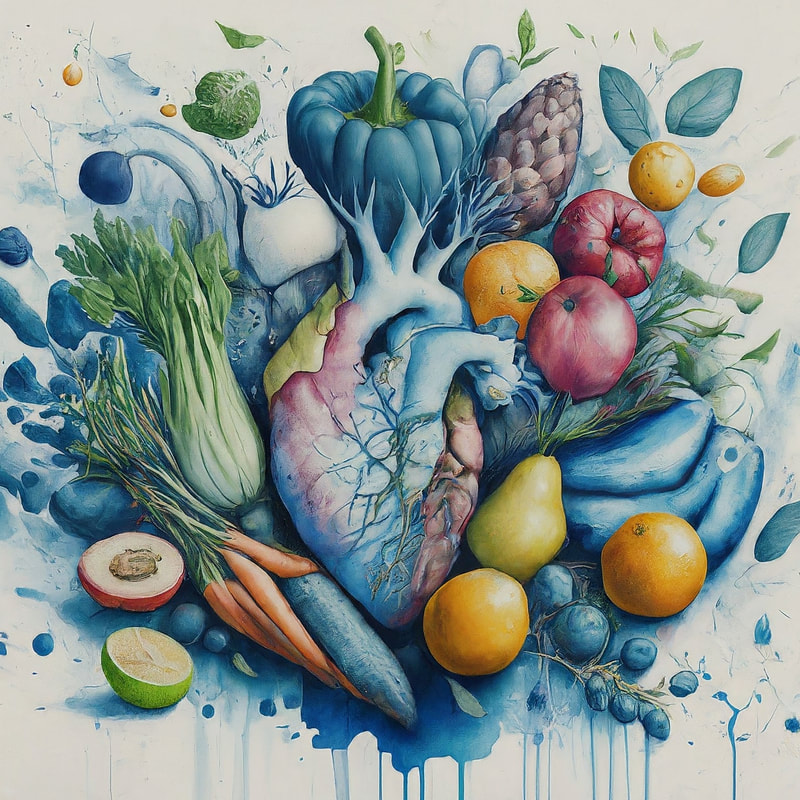

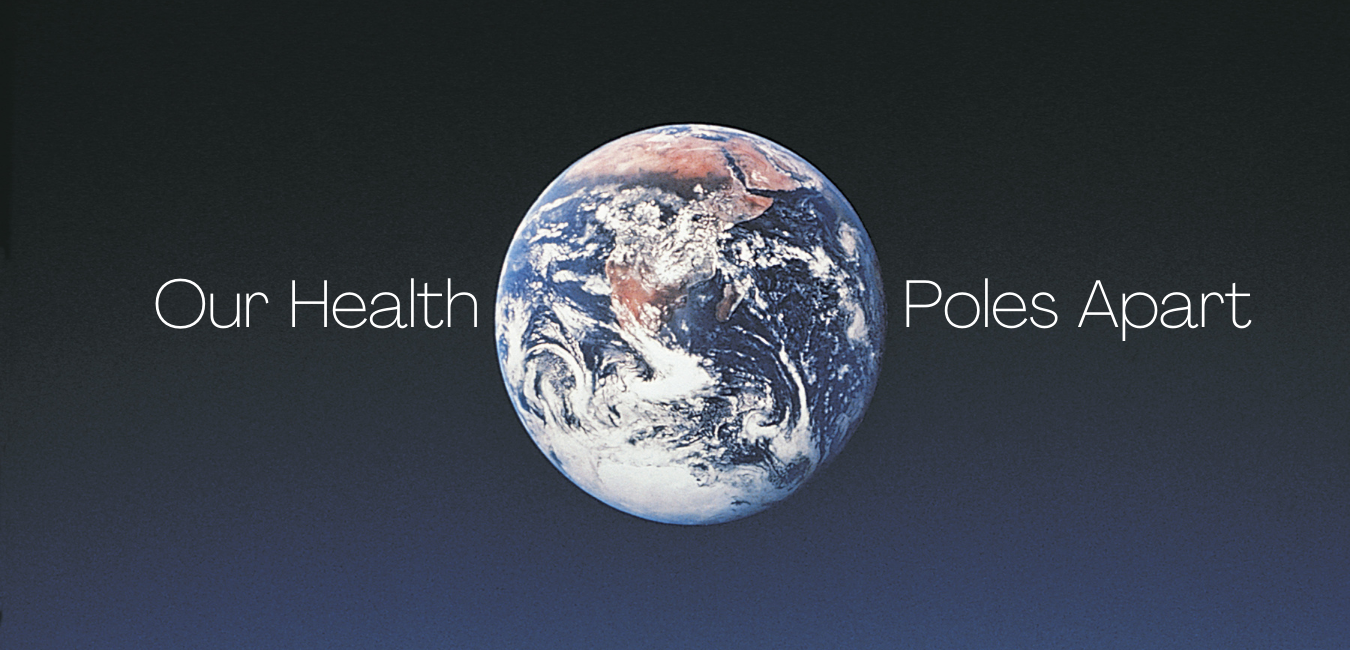
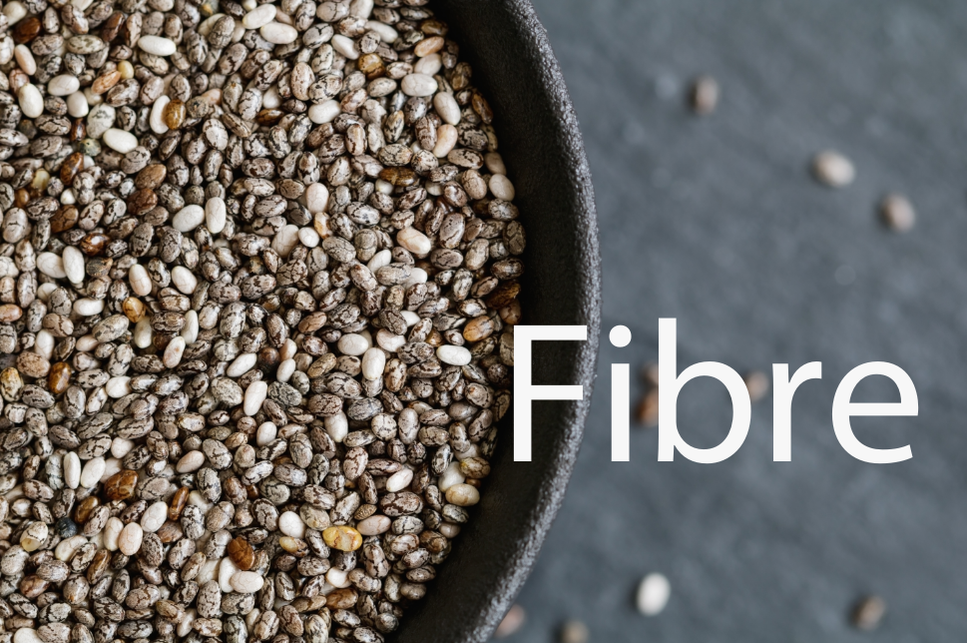
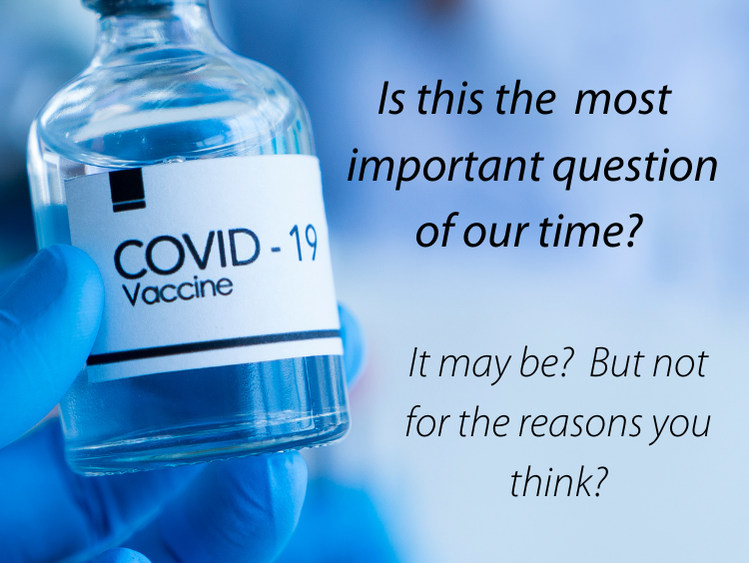
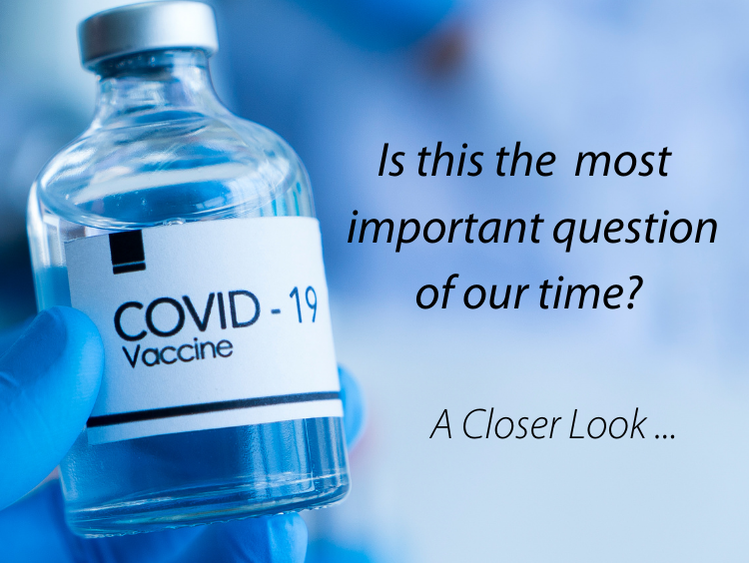
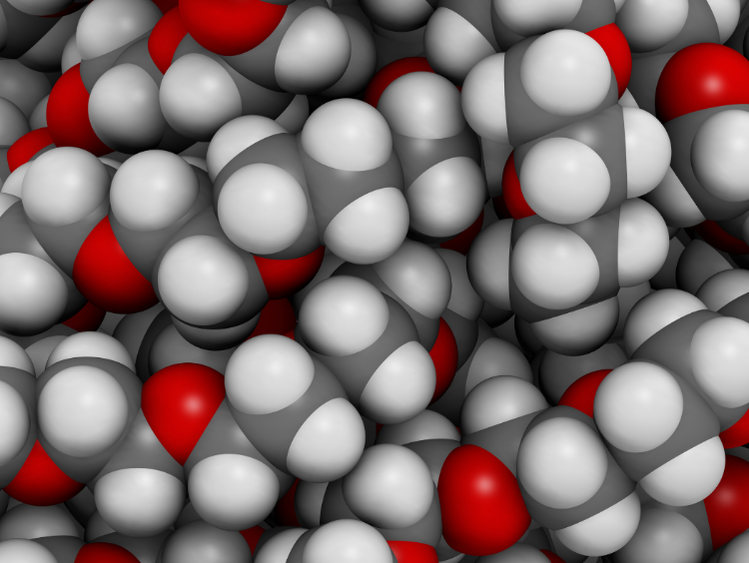
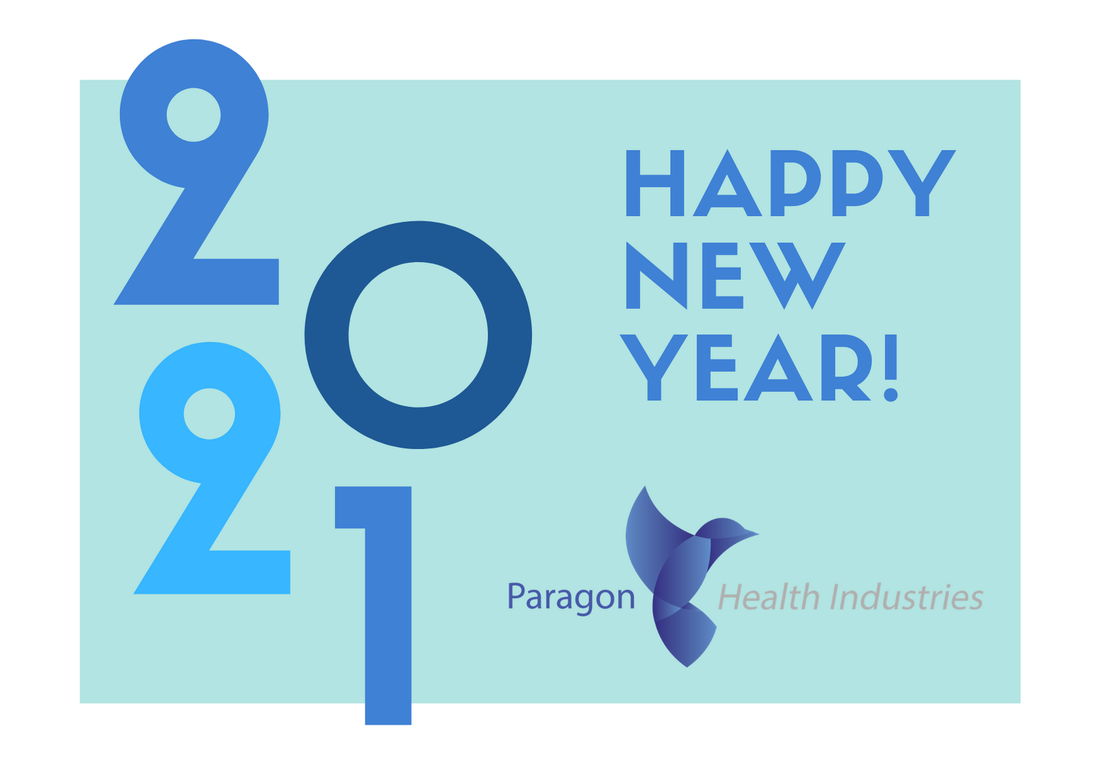
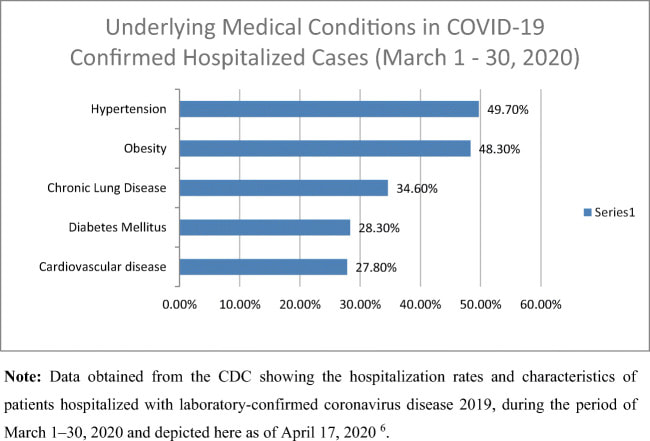
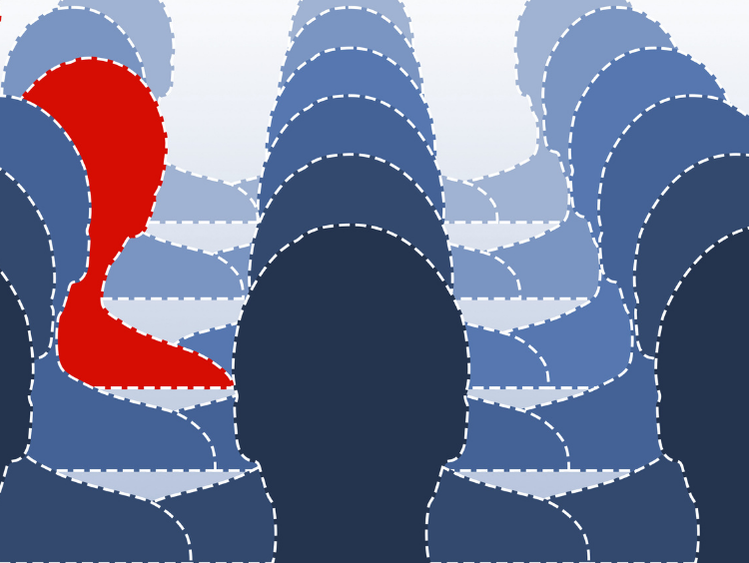
 RSS Feed
RSS Feed